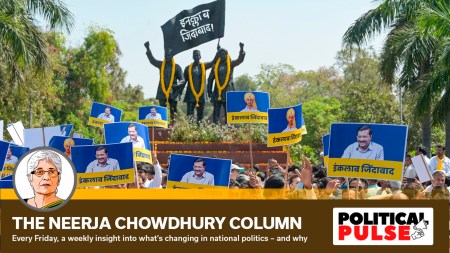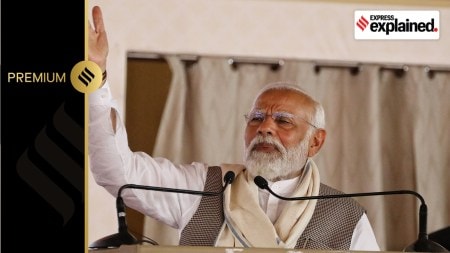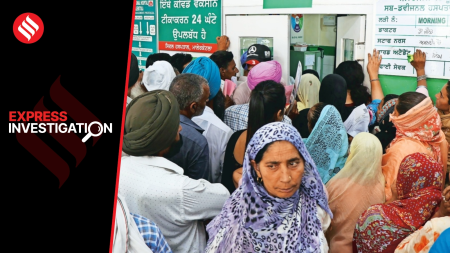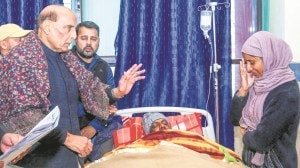- India
- International
How Rani Chennamma’s revolt against the British inspired a national campaign for women’s rights
The Kittur revolt of 1824, one of the earliest woman-led anti-colonial struggles. Rani Chennamma’s valour forms a significant part of Karnataka’s political imagination. The reason that Rani Chenamma came into our national consciousness after other women warriors like Rani Laxmi Bai was because Karnataka became a state much later.
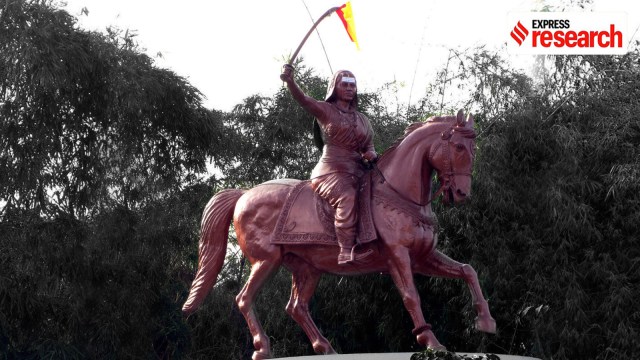 Rani Chennamma of Kittur (Wikimedia Commons)
Rani Chennamma of Kittur (Wikimedia Commons)A fleet of 20,000 British soldiers was positioned on the foothills of the Kittur fort as they attempted to invade the former princely state of Karnataka. But the Queen of Kittur, Rani Chennamma, retaliated and killed a British official to protect and safeguard her homeland.
This came to be known as the Kittur revolt of 1824, one of the earliest woman-led anti-colonial struggles. Rani Chennamma’s valour forms a significant part of Karnataka’s political imagination.
Commemorating 200 years of Rani Chennamma’s rebellion against the British East India Company, several social groups across the country, including Act Now for Harmony and Democracy (ANHAD) and the National Federation of Indian Women (NFIW), are organising a national campaign, Naanoo Rani Chennamma (I am Rani Chennamma too) on February 21. The campaign, which is set to begin from Kittur, the site of Chennamma’s resistance, calls on women to rise against patriarchal, anti-democratic and casteist forces in the country.
Speaking about the campaign, social activist Shabnam Hashmi says, “It is the woman who suffers in all contexts. If there is unemployment, ultimately it falls on the woman. If there is no food in the house, she goes hungry. So we want to invoke Chennamma’s memory to mobilise women to fight for their rights.”
The Kittur Rebellion
Chenamma was born on October 23, 1778, in Kagati, a small village in present-day Belagavi district in Karnataka. At the age of 15, she married Raja Mallasarja of Kittur, who ruled the province until 1816.

After Mallasarja’s death in 1816, his eldest son, Shivalingarudra Sarja, ascended the throne. But it wasn’t long before Shivalingarudra’s health started deteriorating. Kittur needed an heir apparent to survive. However, Shivalingarudra had no natural heir and Chennamma too had lost her son. Before his death in 1824, Shivalingarudra adopted a child, Shivalingappa, as the successor. However, the British East India Company refused to recognise Shivalingappa as the successor of the kingdom under the ‘doctrine of lapse’.
Under the doctrine, any princely state without a natural heir would collapse and would be annexed by the Company, and John Thackery, the British official at Dharwad, launched an attack on Kittur in October 1824.
In her book Ranis and the Raj, historian Queeny Pradhan writes that Thackery ordered two guns of horse artillery and a company of infantry to enter the fort. The Kittur army, under the leadership of Rani Chennamma, retaliated and opened tremendous fire. Thackeray was killed and Rani Chennamma emerged victorious.
However, this victory was short-lived. On December 3, 1824, the British army attacked the Kittur Fort and captured it. Rani Chennamma and her family were imprisoned and jailed at the fort in Bailhongal, where she died in 1829.
In an interview with indianexpress.com, Pradhan says that this revolt showed the extent to which women participated in political activities and ran the state. She says there are several letters that Rani Chennamma and her daughter-in-law Veeramma wrote to the British persuading them to honour the commitment to Kittur and not annex it on the basis of the doctrine of lapse.
Pradhan argues that the records show Rani Chennama as an “astute administrator and a seasoned stateswoman”. The reason that Rani Chenamma came into our national consciousness after other women warriors like Rani Laxmi Bai was because Karnataka became a state much later. Therefore, the political consciousness too emerged at a later time but people revered Rani Chennamma and her associate Sangoli Rayanna, she says.
“Rani Laxmi Bai’s heroic death on the battlefield also adds to her aura. But Chennamma was jailed for the later part of life which remains unknown to the public and that’s why she is less popular,” Pradhan says.
Historian AB Vaggar, who published the two-volume book Kittur Samsthanada Dakhalegalu (The Documents of Kittur Samsthana) on Rani Chennamma, claims that people tend to remember the Queen of Kittur only for the two revolts against the British. However, there are many more records which reveal her commitment to helping people, even when she was jailed.
Vaggar further says there are some records found at Gadag, another district in Karnataka, where Rani Chennamma and her family members lived after the British seized Kittur Samsthan, and she took loans to support herself and her family. “These instances demonstrate her perseverance and desire to survive at any cost,” he says.
Folklore
During her research, Pradhan found several Kannada lavanis or folk songs that fondly remember Rani Chennamma as a protector and guardian. She talks about interesting differences in the ways in which the imperial sources and the lavanis highlight Rani Chennamma and her role in the Kittur Samsthan.
Pradhan notes the imperial records do not mention the names of the queens and are written entirely from a colonial standpoint. The British records do not have much information on her and how she fought but do have petitions and letters that she wrote.
The British records also do not have any mention of Rani Chennamma’s role in the Kittur revolt but the lavanis have many songs that point to the contrary. The lavanis glorify Rani Chennamma to be a protector who fought the British bravely.
Pradhan says the silence in the imperial records about the role of Rani Chennamma and the use of deception to annex Kittur highlight that the British wanted to maintain a streak of moral high ground while remaining silent about their own shortcomings.
Even in the post-colonial setting, Pradhan says, the general public largely reveres martial queens of India through the iconography of a woman sitting on a horse with a sword. However, “women, as Chennamma’s case shows us, need not be on a horse to have martial qualities, she may be able to strategise and be a good administrator, which is equally important.”
Vaggar points out that Rani Chennamma comes across as a woman with tremendous capacity who rebelled against the most dominant social traditions. In a patriarchal society, Rani Chennamma’s ability to lead the state demonstrates her leadership qualities.
Nanoo Chennamma Campaign
The organisers of the campaign to commemorate Rani Chennamma plan to release the ‘Kittur Declaration’. Akhila Vidyasandra, one of the organisers of the event, says, “the declaration will be about the fighting spirit of Indian women. We want equal rights and representation of women”.
Vidyasandra believes that the rally is politically significant too. “Political parties do not respect women. This rally is to keep up the spirit of equality and emphasise that women are not here to only suffer. Women will only vote for the party which respects them and enables them to live comfortably”, she tells indianexpress.com.
Hashmi says the declaration will also talk about the situation of women in India and how they have fared in the last 10 years.
The organisers of the event plan to mobilise 3,000-5,000 women from the state to join the rally. About 60 progressive women groups, including the All India Feminist Alliance and Stri Jagruti Samiti, are also part of the campaign. However, Vidyasandra says the campaign is not restricted to just women’s rights. It is about equality and representation, which are larger social and systemic issues in the country. Through the legacy of Rani Chennamma, Hashmi and Vidyasandra want to mobilise women to demonstrate their strength and commitment to fight against oppression and hatred.
“We are trying to invoke Chennamma’s memory to show that women can be the vanguards of safeguarding dignity and justice. Right now since the attack is on the Constitution and democracy, we are asking women to rise and safeguard democracy”, says Hashmi.
Rani Chennamma’s bravery is an inspiration to the women of the country. Her stride and quick thinking to safeguard her homeland can be seen as a testament to her commitment and dedication to protecting her kingdom.
Even while in prison, Rani Chennamma was in touch with local leaders like Sangoli Rayanna. During the clashes, Chennamma was cognisant of the Company’s forces. Yet, she chose to revolt. Pradhan believes that having the courage to take a stance is important for today’s women.
Vidyasandra says that the rally is also focused on demanding quality education and eradication of poverty for the empowerment of women. “More than any temple and smart cities, we need educational institutes and schemes to uplift women and the poor.”
“Commemorating a monumental moment in our history like the Kittur revolt, which was led by a woman, might inspire more women to fight for their rights and enter public life,” she says.
Apr 05: Latest News
- 01
- 02
- 03
- 04
- 05


